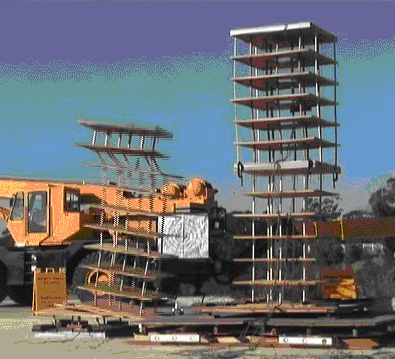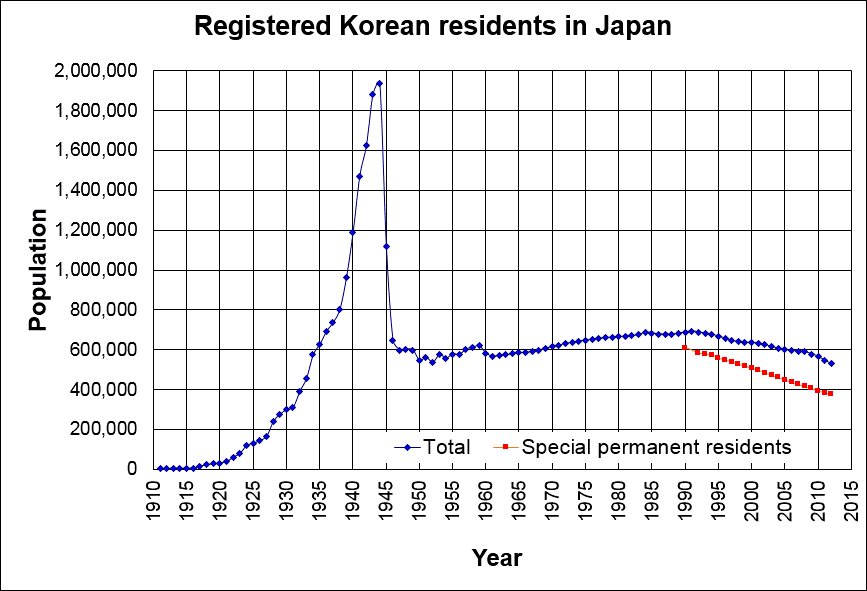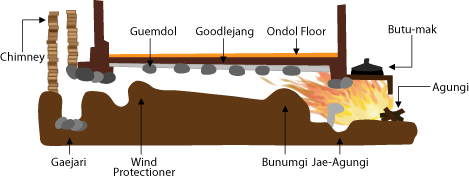|
Tokyo Korean Culture Center
The is a Korean Language and Cultural Exchange Center in Toshima, Tokyo, Japan. Supported by the Korean Ministry of Culture, this center offers Korean Language classes and promotes Korean culture in Japan through educational, sporting, entertainment, art, and trade events and through the promotion of tourism. The Tokyo Korea Center is one of twelve Korean Cultural Centers in nine different countries. Activities The Tokyo Korean Culture Center holds regular events and classes including: art fairs, dramas, movies, plays, cultural lectures, Korean music classes, Korean art classes, language classes, language exchange, and Korean language teacher training. Architecture The design concept for the center’s curved facade was derived from the image of a dancer’s flowing robes performing the traditional Seungmu dance. The façade is made of dual-layered glass and aluminum curtains. Due to the high occurrence of seismic activity, the center is a Seismic Isolated Structure. Some of ... [...More Info...] [...Related Items...] OR: [Wikipedia] [Google] [Baidu] |
South Korean Ministry Of Culture, Sports And Tourism
South Korea's Ministry of Culture, Sports and Tourism (MCST) is a central government agency responsible for the areas of tourism, culture, art, religion, and sports. It has two vice ministers, three assistant ministers, one commission, and over 60 divisions. The first Minister of Culture was novelist Lee O-young. Subsidiary entities such as the National Museum, the National Theater, and the National Library are under the Ministry. The headquarters are located in the Sejong Government Complex in Sejong City. The headquarters were previously in Jongno District, Seoul. Goals The main goals of the MCST are: *To educate Korean people to be cultured and creative citizens *To create a society in which leisure and work are in harmony *To create a dynamic nation in which various local cultures are represented *To enhance public awareness of the national agenda (e.g. green growth) through public relations activities *To improve quality of life for citizens by supporting cultural ev ... [...More Info...] [...Related Items...] OR: [Wikipedia] [Google] [Baidu] |
Earthquake Engineering
Earthquake engineering is an interdisciplinary branch of engineering that designs and analyzes structures, such as buildings and bridges, with earthquakes in mind. Its overall goal is to make such structures more resistant to earthquakes. An earthquake (or seismic) engineer aims to construct structures that will not be damaged in minor shaking and will avoid serious damage or collapse in a major earthquake. Earthquake engineering is the scientific field concerned with protecting society, the natural environment, and the man-made environment from earthquakes by limiting the seismic risk to socio-economically acceptable levels. Traditionally, it has been narrowly defined as the study of the behavior of structures and geo-structures subject to seismic loading; it is considered as a subset of structural engineering, geotechnical engineering, mechanical engineering, chemical engineering, applied physics, etc. However, the tremendous costs experienced in recent earthquakes have led to an ... [...More Info...] [...Related Items...] OR: [Wikipedia] [Google] [Baidu] |
Japan–South Korea Relations
After the division of Korea, Japan and South Korea established diplomatic relations in December 1965, under the Treaty on Basic Relations between Japan and the Republic of Korea, with Japan recognizing South Korea as the only legitimate government of the whole Korean peninsula. Japan and South Korea are neighbors, and they are both Major non-NATO allies of the United States in East Asia. Despite this, the relationship between the two states has greatly deteriorated in recent years, characterized by strong mutual distrust and a number of disputes. These disputes include: territorial claims on Liancourt Rocks (''Dokdo'' or ''Takeshima''), Japanese prime ministers' visits to Yasukuni Shrine, differing views on Imperial Japan's treatment of colonial Korea, and Japan's refusal to negotiate Korea's demands that it apologize or pay reparations for mistreatment of World War II comfort women from Korea. The Diplomatic Bluebook of Japan by the Ministry of Foreign Affairs of Japan in ... [...More Info...] [...Related Items...] OR: [Wikipedia] [Google] [Baidu] |
Zainichi Korean Culture
comprise ethnic Koreans who have permanent residency status in Japan or who have become Japanese citizens, and whose immigration to Japan originated before 1945, or who are descendants of those immigrants. They are a group distinct from South Korean nationals who have emigrated to Japan after the end of World War II and the division of Korea. They currently constitute the second largest ethnic minority group in Japan after Chinese immigrants, due to many Koreans assimilating into the general Japanese population. The majority of Koreans in Japan are , often known simply as , who are ethnic Korean permanent residents of Japan. The term Zainichi Korean refers only to long-term Korean residents of Japan who trace their roots to Korea under Japanese rule, distinguishing them from the later wave of Korean migrants who came mostly in the 1980s, and from pre-modern immigrants dating back to antiquity who may themselves be the ancestors of the Japanese people. The Japanese word "Zainic ... [...More Info...] [...Related Items...] OR: [Wikipedia] [Google] [Baidu] |
Cultural Centers In Japan
Culture () is an umbrella term which encompasses the social behavior, institutions, and norms found in human societies, as well as the knowledge, beliefs, arts, laws, customs, capabilities, and habits of the individuals in these groups.Tylor, Edward. (1871). Primitive Culture. Vol 1. New York: J.P. Putnam's Son Culture is often originated from or attributed to a specific region or location. Humans acquire culture through the learning processes of enculturation and socialization, which is shown by the diversity of cultures across societies. A cultural norm codifies acceptable conduct in society; it serves as a guideline for behavior, dress, language, and demeanor in a situation, which serves as a template for expectations in a social group. Accepting only a monoculture in a social group can bear risks, just as a single species can wither in the face of environmental change, for lack of functional responses to the change. Thus in military culture, valor is counted a typical be ... [...More Info...] [...Related Items...] OR: [Wikipedia] [Google] [Baidu] |
Buildings And Structures In Toshima
A building, or edifice, is an enclosed structure with a roof and walls standing more or less permanently in one place, such as a house or factory (although there's also portable buildings). Buildings come in a variety of sizes, shapes, and functions, and have been adapted throughout history for a wide number of factors, from building materials available, to weather conditions, land prices, ground conditions, specific uses, prestige, and aesthetic reasons. To better understand the term ''building'' compare the list of nonbuilding structures. Buildings serve several societal needs – primarily as shelter from weather, security, living space, privacy, to store belongings, and to comfortably live and work. A building as a shelter represents a physical division of the human habitat (a place of comfort and safety) and the ''outside'' (a place that at times may be harsh and harmful). Ever since the first cave paintings, buildings have also become objects or canvasses of much artistic ... [...More Info...] [...Related Items...] OR: [Wikipedia] [Google] [Baidu] |
Tokyo Korean School
Tokyo Korean School ( ja, 東京韓国学校 ''Tōkyō Kankoku Gakkō'', ko, 동경한국학교) is a Korean school located in Wakamatsu-cho, Shinjuku-ku, Tokyo, Japan; catering to the Korean expatriate community and to Japanese-Koreans living in and around Tokyo. It was founded in 1954. It is affiliated with the South Korean government and Mindan (민단). It includes an elementary school, a middle school and a high school. The total population of the school is approximately 1,100 students. The primary language of instruction at the school is Korean. However, there is aEnglish language departmentanat the school. Educational essentialism is the main educational philosophy of teachers in both the Korean and English departments at the school. Notable alumni * Kwon Ri-se * Zico See also * Tokyo Korean Culture Center - South Korean culture center in Tokyo References Japanese international schools in South Korea: * Japanese School in Seoul * Busan Japanese School Furt ... [...More Info...] [...Related Items...] OR: [Wikipedia] [Google] [Baidu] |
Traditional Korean Roof Construction
Traditional Korean roof construction has traditionally used many kinds of natural materials. They are made of neowa (shingle), giwa (tiles), byeotjib (rice Straw), stone giwa (tiles), eoksae (eulalia) and goolpy (oak bark) Neowa (Shingle) roof Neowajib (a shingle-roofed house) can be seen in mountain villages (for example, in Gangwon-do), since these are places which are hard to get materials, such as Giwa and rice straw. Instead, it is made with the pieces of thick bark of about 200-year-old red pine trees which are easy to get. The size of neowa is not fixed, but it is usually about 20–30 cm wide, 40–59 cm long and 4–5 cm thickness. Usually 105–140 of neowa used to complete a roof. To protect neowa from the wind, heavy stones or logs were put on the roof. The air can be changed through the gaps between neowa, since there was no smokestack. When it rains, the wood with moisture can have a waterproof effect. In common, neowa's durability is around 5 years ... [...More Info...] [...Related Items...] OR: [Wikipedia] [Google] [Baidu] |
Base Isolation
Seismic base isolation, also known as base isolation, or base isolation system, is one of the most popular means of protecting a structure against earthquake forces. It is a collection of structural elements which should substantially decouple a superstructure from its substructure that is in turn resting on the shaking ground, thus protecting a building or non-building structure's integrity. Base isolation is one of the most powerful tools of earthquake engineering pertaining to the passive structural vibration control technologies. The isolation can be obtained by the use of various techniques like rubber bearings, friction bearings, ball bearings, spring systems and other means. It is meant to enable a building or non-building structure to survive a potentially devastating seismic impact through a proper initial design or subsequent modifications. In some cases, application of base isolation can raise both a structure's seismic performance and its seismic sustainability c ... [...More Info...] [...Related Items...] OR: [Wikipedia] [Google] [Baidu] |
Ondol
Ondol (; , Hangul: 온돌, 溫堗, ) or gudeul (Hangul: 구들, ) in Korean traditional architecture, is underfloor heating that uses direct heat transfer from wood smoke to heat the underside of a thick masonry floor. In modern usage it refers to any type of underfloor heating, or to a hotel or a sleeping room in Korean (as opposed to Western) style. The main components of the traditional ''ondol'' are an ''agungi'' (firebox or stove) accessible from an adjoining room (typically kitchen or master bedroom), a raised masonry floor underlain by horizontal smoke passages, and a vertical, freestanding chimney on the opposite exterior wall providing a draft. The heated floor, supported by stone piers or baffles to distribute the smoke, is covered by stone slabs, clay and an impervious layer such as oiled paper. History Origin Use of the ''ondol'' has been found at archaeological sites in present-day North Korea. A Neolithic Age archaeological site, circa 5000 BC, discovered in Unggi ... [...More Info...] [...Related Items...] OR: [Wikipedia] [Google] [Baidu] |
Toshima, Tokyo
is a special ward in Tokyo, Japan. It is one of the eight central wards of the Tokyo Metropolitan area. Located in the northern area of Tokyo, Toshima is bordered by the wards of Nerima, Itabashi, and Kita in the north and Nakano, Shinjuku, and Bunkyo in the south. The ward was founded on March 15, 1947, and reached a peak resident population of 370,000 in 1965. The population has continued to decline and as of May 1, 2015, the ward had an estimated population of 298,250, with a population density of 22,920 persons per km2. During the day the population swells with commuters, resulting in a daytime population of around 378,475. The total land area of Toshima is 13.01 km2, sitting on a moderate plateau with a difference of 28 m between the ward's highest and lowest points. Approximately 47% of Toshima's land is residential, and 20% is commercial and public areas. Although Toshima is a ward, it is referred to as a city. The ward offices are located in Ikebukuro, which is als ... [...More Info...] [...Related Items...] OR: [Wikipedia] [Google] [Baidu] |
.jpg)








